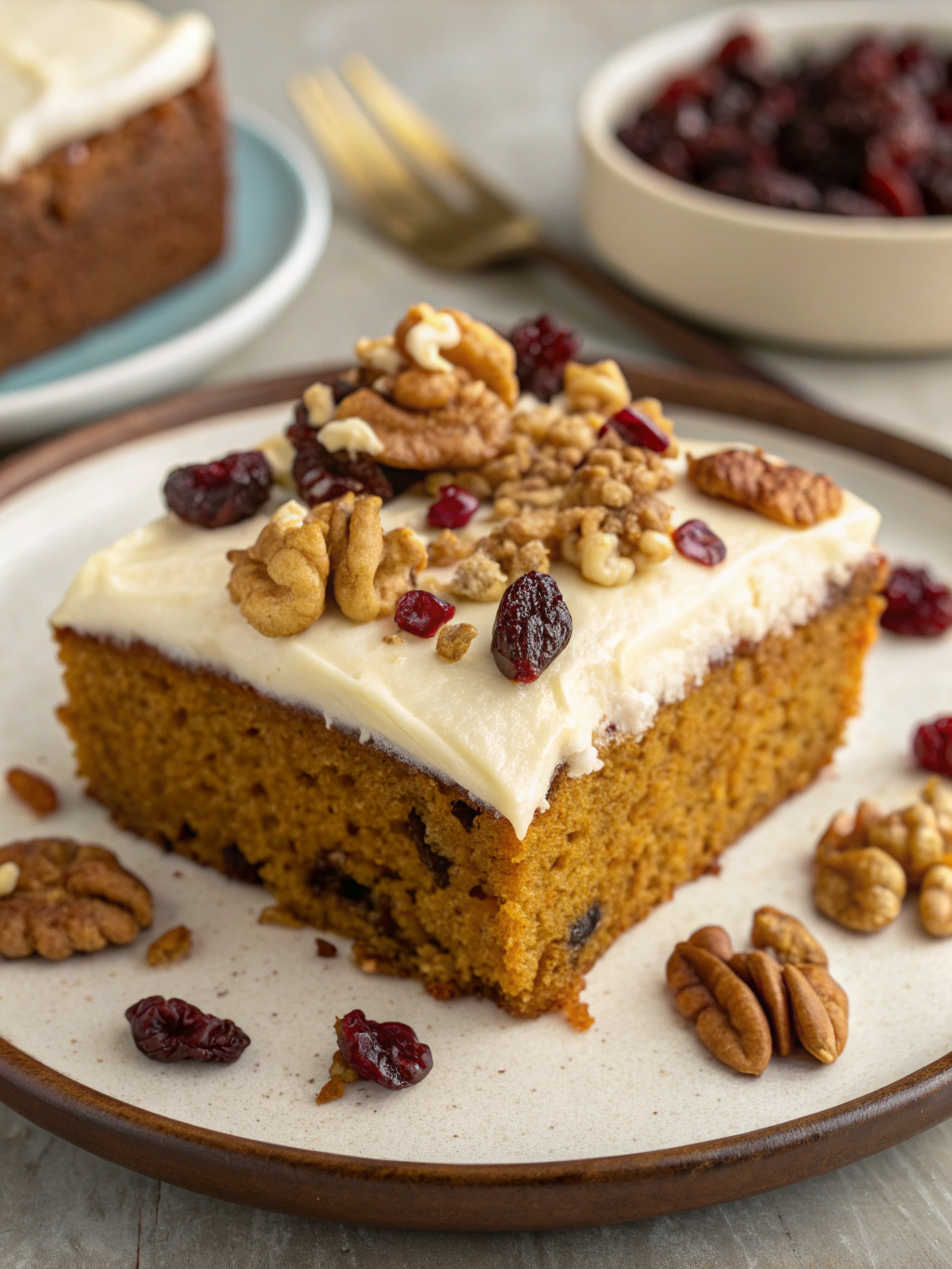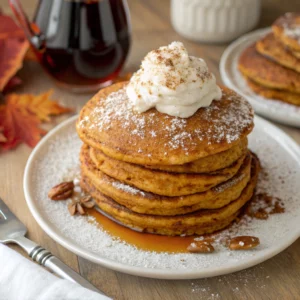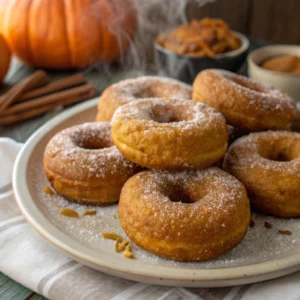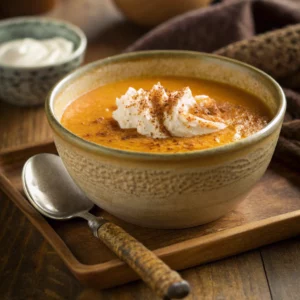Have you ever wondered why Brazilian Carrot Cake looks and tastes so different from its American counterpart? This vibrant orange cake topped with a glossy chocolate glaze has been a staple at Brazilian birthday parties and afternoon coffee for generations, yet remains relatively unknown outside South America.
Unlike the American version with cream cheese frosting and visible carrot shreds, the Brazilian Carrot Cake (or “bolo de cenoura”) blends whole carrots into the batter, creating a moist, velvety texture with a stunning orange hue that’s instantly recognizable to Brazilians everywhere.
This recipe captures the authentic taste of Brazil’s beloved dessert while being surprisingly simple to make. With just a blender and a few basic ingredients, you’ll create a cake that’s both exotic and comforting.
Ingredients List
For the Cake:
- 2 cups (about 300g) fresh carrots, peeled and roughly chopped
- 3 large eggs, at room temperature
- 1 cup (200g) granulated sugar
- 1/2 cup (120ml) vegetable oil
- 2 cups (240g) all-purpose flour
- 1 tablespoon baking powder
- 1/4 teaspoon salt
For the Chocolate Glaze:
- 4 tablespoons (60g) unsalted butter
- 1/2 cup (100g) granulated sugar
- 1/3 cup (40g) unsweetened cocoa powder
- 1/4 cup (60ml) milk
- 1 teaspoon vanilla extract (optional)
Substitution tips: For a healthier version, you can replace half the oil with unsweetened applesauce. The cake will still maintain its moisture while reducing fat content. If you prefer a less sweet cake, reduce sugar to 3/4 cup without compromising texture.
Timing
- Preparation time: 15 minutes
- Cooking time: 35-40 minutes
- Glaze preparation: 5 minutes
- Total time: Under 1 hour
This Brazilian Carrot Cake comes together 30% faster than traditional carrot cakes that require grating carrots by hand. The blender method not only saves time but creates that signature smooth texture Brazilians love.
Step-by-Step Instructions
Step 1: Prepare Your Equipment
Preheat your oven to 350°F (180°C). Grease and flour a 9-inch round cake pan or a bundt pan. The bundt shape is traditional in Brazil, but any cake pan works well. Ensure your ingredients are at room temperature for the best blending results.
Step 2: Blend the Wet Ingredients
In a blender, combine the chopped carrots, eggs, and oil. Blend on high speed until completely smooth with no visible carrot pieces. This typically takes 1-2 minutes. The mixture should have a bright orange color and smooth consistency.
Step 3: Add Sugar and Continue Blending
Add the sugar to the carrot mixture and blend for another 30 seconds until well incorporated. The sugar helps break down any remaining carrot fibers. The mixture should now be slightly thicker but still pourable.
Step 4: Combine Dry Ingredients
In a large bowl, whisk together the flour, baking powder, and salt. This ensures even distribution of the leavening agent throughout the cake batter, preventing any bitter spots from undistributed baking powder.
Step 5: Mix Wet and Dry Ingredients
Pour the carrot mixture into the bowl with the dry ingredients. Gently fold with a spatula until just combined. Be careful not to overmix, as this can make the cake dense. A few small lumps are perfectly fine.
Step 6: Bake the Cake
Pour the batter into your prepared pan and bake for 35-40 minutes, or until a toothpick inserted in the center comes out clean. The cake will rise considerably and develop a beautiful golden-orange color on top.
Step 7: Prepare the Chocolate Glaze
While the cake is baking, prepare the glaze. In a small saucepan over medium heat, combine butter, sugar, cocoa powder, and milk. Stir constantly until it comes to a gentle boil. Continue cooking for 2-3 minutes until slightly thickened. Remove from heat and add vanilla if using.
Step 8: Finish and Glaze
Allow the cake to cool in the pan for 10 minutes, then turn it out onto a wire rack. While the cake is still warm (but not hot), pour the warm chocolate glaze over the top, allowing it to drip down the sides. The warm cake helps the glaze adhere better.
Nutritional Information
Per slice (assuming 12 slices per cake):
- Calories: 320
- Total Fat: 14g
- Saturated Fat: 4g
- Cholesterol: 55mg
- Sodium: 180mg
- Total Carbohydrates: 45g
- Dietary Fiber: 2g
- Sugars: 25g
- Protein: 5g
This cake provides approximately 70% of your daily vitamin A requirements per slice, thanks to the high carrot content. The carrots also contribute beneficial antioxidants and dietary fiber, making this dessert slightly more nutritious than standard chocolate cakes.
Healthier Alternatives for the Recipe
For a lower-sugar version, reduce the sugar to 2/3 cup in the cake and use a dark chocolate ganache (melted dark chocolate with a splash of heavy cream) instead of the traditional sugary glaze.
Make it whole grain by substituting half the all-purpose flour with whole wheat pastry flour. This adds fiber while maintaining the cake’s tender crumb. The carrots’ natural moisture helps prevent the whole grain version from becoming dry.
For a gluten-free adaptation, use a 1:1 gluten-free flour blend with xanthan gum. The blended carrot mixture provides enough moisture and binding to work well with gluten-free flours without additional adjustments.
Serving Suggestions
In Brazil, Brazilian Carrot Cake is traditionally served with afternoon coffee or “cafezinho.” Cut into small squares, it makes a perfect companion to a strong espresso or cappuccino.
For a more decadent dessert, serve slightly warm with a scoop of vanilla ice cream. The contrast between the warm cake, fudgy glaze, and cold ice cream creates a delightful sensory experience.
Add a sprinkle of toasted coconut or chopped nuts on top of the glaze for texture contrast. Brazilians occasionally add sprinkles for children’s birthday celebrations, creating a festive appearance.
Common Mistakes to Avoid
- Not blending the carrots thoroughly: The hallmark of this cake is its smooth texture. Blend until no visible carrot pieces remain for authentic results.
- Overmixing the batter: Once you add the flour, mix just until combined. Overmixing develops gluten, resulting in a tough cake rather than the tender crumb this recipe is known for.
- Undercooking the glaze: The chocolate topping needs to reach a slight thickening point to achieve that signature glossy finish that sets properly. Cook it for at least 2 minutes after it begins to boil.
- Glazing a cold cake: Pour the glaze while the cake is still warm for the best absorption and adhesion. A cold cake will cause the glaze to set too quickly and not distribute evenly.
Storing Tips for the Recipe
This cake stays moist for up to 3 days when stored in an airtight container at room temperature. The carrot content provides natural moisture that prevents it from drying out quickly.
For longer storage, refrigerate for up to a week. Allow refrigerated slices to come to room temperature before serving to enjoy the full flavor profile and soft texture.
This cake freezes beautifully for up to 3 months. Wrap individual slices in plastic wrap and then aluminum foil before freezing. Thaw overnight in the refrigerator for best results.
The batter can be prepared up to a day ahead and refrigerated before baking. Just bring it to room temperature for about 30 minutes before pouring into the pan and baking.
Conclusion
This authentic Brazilian Carrot Cake offers a delightful departure from the American version, with its vibrant color, velvety texture, and irresistible chocolate glaze. The simple preparation belies its impressive results – a cake that’s both everyday-easy and special-occasion worthy.
The blender method makes this recipe accessible to bakers of all skill levels, while the whole-carrot approach delivers superior moisture and nutrition compared to traditional carrot cakes.
Have you tried making this Brazilian classic? Share your experience in the comments below! And if you enjoyed this recipe, don’t forget to check out our other international desserts that bring global flavors to your kitchen.





